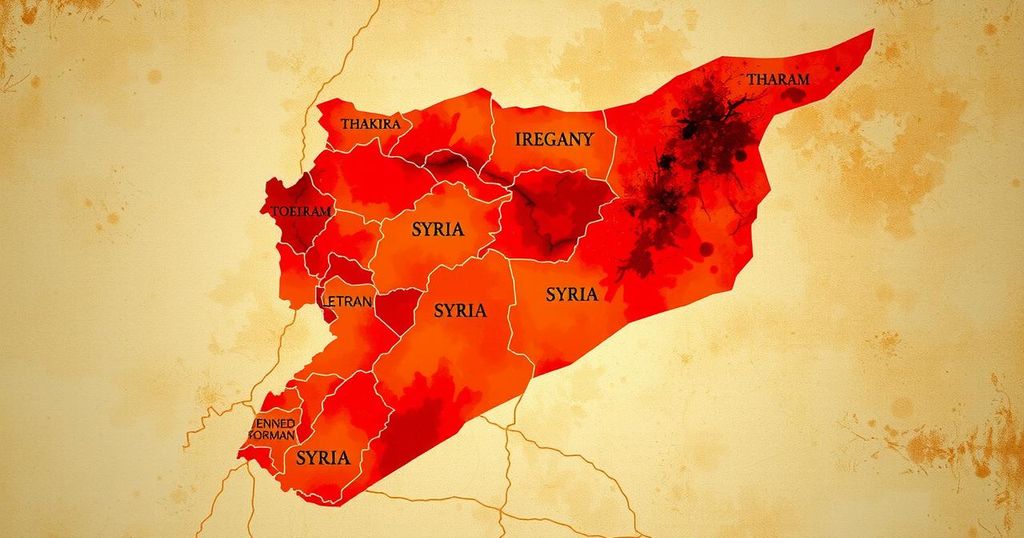World news
AFRICA, AHMED AL - SHARAA, AL - QAEDA, AL - SHARAA, ASIA, ASSAD, CIVIL WAR, CONFLICT, COUNCIL ON FOREIGN RELATIONS, ENRICO MATTEI, EUROPE/ASIA, HA ’ YAT TAHRIR AL - SHAM, HTS, IRAN, LATAKIA, MILITARY OPERATIONS, REFUGEE CRISIS, RUSSIA, STEVEN A. COOK, SYRIA, SYRIAN NATIONAL ARMY, WAR
Lena Nguyen
0 Comments
Syria’s Surge in Violence: Implications and the Path Ahead
A recent surge in violence in Syria has raised concerns of a new civil war; however, the unpopularity of Assad loyalists and the leadership efforts of Ahmed al-Sharaa provide a platform for potential stabilization. Al-Sharaa’s outreach for economic aid and respect for minority rights are critical to navigating this complex situation, while regional and international actors monitor developments cautiously.
Recent violence in Syria linked to loyalists of former President Bashar al-Assad has raised concerns about a potential return to sectarian conflict. Since December’s regime change, this violent surge has led to hundreds of deaths, mainly among civilians. Despite fears, the current situation does not necessarily predict a new civil war, as the Assad loyalists remain unpopular due to their history of abuses against the Syrian populace.
The violence reportedly stemmed from a rebellion by Assad loyalists, particularly among armed forces concentrated along the coast and near Latakia. With many loyalists being Alawites, they staged protests against the new regime led by Ahmed al-Sharaa and his group, Ha’yat Tahrir al-Sham (HTS). The regime has responded with violence to suppress this uprising, leading to civilian casualties amid conflicting reports about ongoing massacres. Understanding the complex interplay of violence and power dynamics is crucial to assessing the situation.
Although the Assad loyalists have attempted to reclaim power, they face significant unpopularity due to the regime’s oppressive history. Ahmed al-Sharaa must act prudently to stabilize his governance. Economic conditions are dire, having contracted 84 percent during the war, and failing to respect minority rights could incite dissent against the new leadership. Al-Sharaa’s leadership aims to forge a path toward recovery by seeking economic support from neighboring states while reassuring minorities that their rights will be preserved.
International involvement, specifically from Iran and Russia, could complicate the stability efforts in Syria. While there are implications of Iranian influence, substantive evidence remains unconfirmed. The response from Arab states has been cautious; they propose to avoid proxy conflicts while remaining focused on domestic issues and other regional crises.
The United States has taken a step back from direct involvement in Syrian affairs, with no indications suggesting a shift in policy under the Trump administration. However, recent negotiations between Damascus and U.S.-backed Kurdish forces mark significant progress toward integrating those groups into Syria’s military and security frameworks, indicating a collaborative direction towards national unity.
Turkey’s involvement also plays a pivotal role, with its government desiring a Syria aligned with its interests, particularly concerning Kurdish nationalism. Successful stabilization of Syria would enhance Turkey’s geopolitical influence while facilitating trade relationships with Gulf states. The path forward requires coordinated strategies among local, regional, and international actors.
In conclusion, while the resurgence of violence in Syria sparks fears of a new civil war, the structural and political dynamics suggest that an all-out conflict may be avoided for now. The unpopularity of loyalists, al-Sharaa’s attempts at economic recovery, and the cautious approaches of neighboring states contribute to a complex but manageable scenario. The involvement of external actors such as Turkey and potential cooperation with American-supported forces also indicates evolving opportunities for stability.
Original Source: www.cfr.org




Post Comment